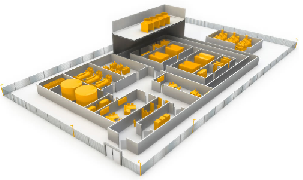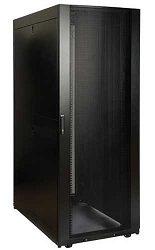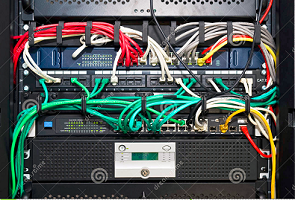Menu
- 130 King Street West, Suite 1800
- P.O. Box 427
- Toronto, ON, Canada M5X 1E3
- (416) 865-3392
- info@triparagon.com
Being unable to deploy critical infrastructure as required is not an option.
Data Center component capacities focuses on those components which, if not carefully monitored, can cause delays in provisioning for new applications. This blog is not all-encompassing but addresses those components where the author has experienced capacity problems in the past. This is especially true where the organization is fragmented and effective communication between the organizations responsible for the various components within the data center is required to avoid issues. For example, where the network accountability rests outside of the IT organization potential communication problems may arise. This could lead to an inadequate number of network ports required to deploy a server which now must sit idle until additional ports can be provisioned. This could also delay the deployment of a critical application. To avoid this sort of complication, the capacity management team should monitor the capacity of all components within the data center thus keeping the accountability in one place.

Capacity of any data center component is similar to the capacity of a water pump. Take, for example, a pump rated at 100 gallons per minute. That is the maximum amount of water that it can pump. If you require 110 gallons per minute you must buy another pump. In order to manage the capacity of the pump you must know its maximum capacity, its current operating capacity (how much water it is currently pumping) and the required capacity (how much water you want to pump). From there it is easy to calculate if another pump has to be purchased. You should also know the lead time that it takes to secure the funding, order the additional equipment, the shipping time and the time to configure, test and deploy. These are factors that must be taken into consideration during the capacity planning process to ensure availability of required capacity.

The capacity of components which require monitoring within a data center includes, but is not limited to:
Core Network Capacity
Capacity planning for the core network is the process of ensuring that sufficient bandwidth is provisioned such that the committed core network service-level agreement (SLA) targets of delay, jitter, loss, and availability can be met. In the core network, where link bandwidths are high and traffic is highly aggregated, the SLA requirements for a traffic class can be translated into bandwidth requirements, and the problem of SLA assurance can effectively be reduced to that of bandwidth provisioning. Hence, the ability to meet SLAs is dependent on ensuring that core network bandwidth is adequately provisioned, which depends in turn on core capacity planning.

Network and SAN and Ports
The number of network ports remaining available in the data center or in your Co Lo area must be continuously tracked. Projects impacting the number of ports required or to be retired must be communicated by the project management team to capacity management with enough lead time to be able to procure additional capacity, if required.
Cabinets (Racks)
As with other critical components that could delay provisioning of services, the capacity available of data center cabinets (u’s, and power) must also be tracked to ensure SLA’s can be met.

Other critical data center components include:
In fact, the capacity management team must be kept well aware of any planned infrastructure changes that will have an impact on the data center. These changes must be communicated to the capacity management team with adequate lead time to enable the procurement of additional equipment, if necessary. In addition, the project management teams must inform capacity management about all potential impacts to capacity requirements including when an application is being retired or replaced and the impacts on the relevant capacity such as storage, network, servers, power, racks, cooling and any other components impacted. This will enable the capacity management team to perform their role as it relates to the data center in an efficient and effective manner.
Running out of network ports, space in cabinets, overloading of power circuits or any other components in the Data center is unacceptable. Data center capacity management is just as important as is the capacity management of the IT infrastructure. All of these must be proactively managed by capacity management.

Tri-Paragon professional data center consultants conduct an assessment of the overall capacity management process and provides a report identifying where the gaps are, how they can be resolved, and the steps that should be taken to improve the process and eliminate the potential for missed SLA’s.

Contact Tri-Paragon Inc. at Phone: 416.865.3392 or by Email: info@triparagon.com to request a quote for a Just Right Capacity Management Assessment and how to improve your Capacity Management Process.
Phase 1 – Discovery
Phase 2 – Execution
Phase 3 – Follow up